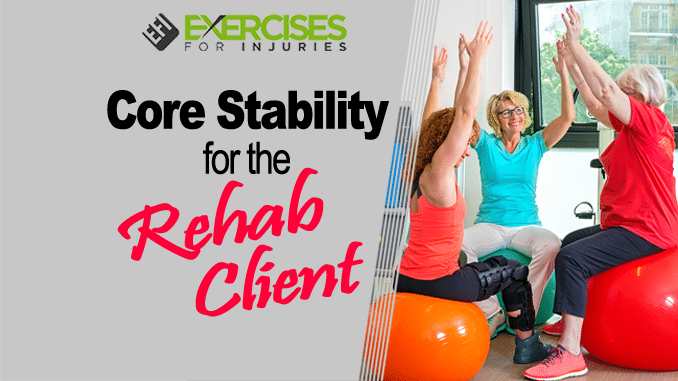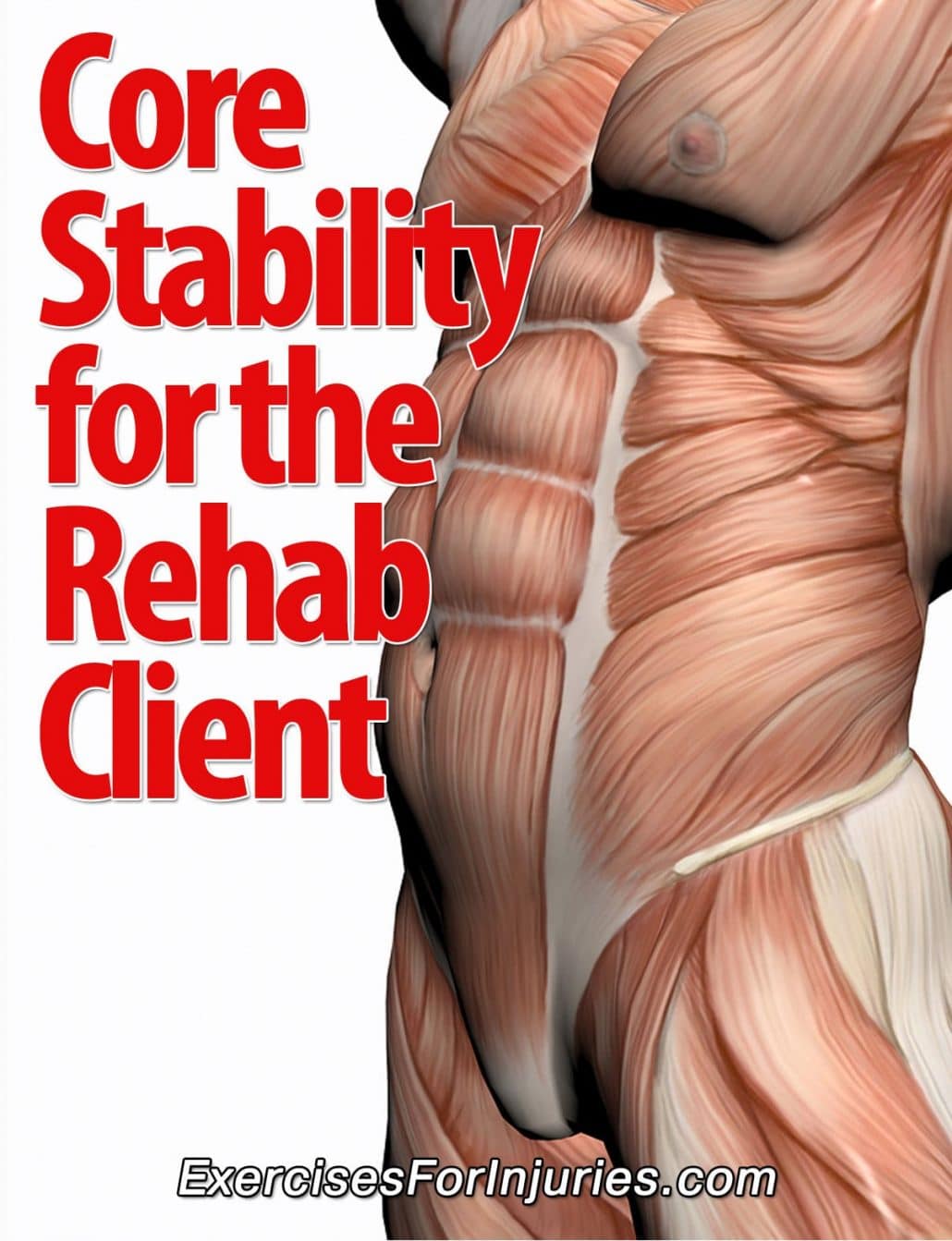
Core stability is critical for any type of exercise program—especially for the rehab client. The core is the center of your body, meaning that anything that works to stabilize it also works to keep you from hurting your back even more. A weak core can lead to posture issues, back pain, and a host of other problems. That’s why any effective rehab program must have a strong focus on core stability. Luckily, we’ll show you exactly how to add this important element into your client’s exercise routine with these courses below.
Introduction to Core Stability
The extremities, such as hands and legs, are part of the core. If a person has a broken arm, for example, they will usually wear a cast. In addition to the core, a brace is frequently required if the person has an unstable core. A person with an unstable core may have either of two types of injuries. The pelvis is pushed forward, and the spinal column is curved, resulting in a hypermobile core. A hyperlordosis occurs in the lumbar spine as a result of a curved spine. In contrast, negative core stability occurs when the core is too loose. Poor posture increased risk of injury and decreased athletic performance are three common symptoms of this condition. A condition in which the core is too tight may result in reduced range of motion, poor posture, and reduced athletic performance.
Course Description:
Training core stability is a tricky aspect. People think it’s about stomach strength, but it’s really about bracing your trunk muscles against destabilizing forces like gravity or movement in another direction. If you have ever suffered from back pain or weakness in your core, this course will get you on the right track. The internal oblique, transverse abdominis, multifidus, and other deep muscles of the body form the core. If you want to avoid future back injuries, you must train these muscles. This course will help you build your core so you can avoid future accidents!
Course Objectives:
- Specific exercises are used to isolate muscles involved in core stability
- Exercise progressions used for beginner and advanced clients
- Core stability training principles
- Methods used to assess levels of core stability
- Core stability exercises for clinical and fitness settings
- CONTINUING EDUCATION CREDITS: 4.0 BCRPA / 4.0 BCAK / 4.0 CMTBC / CSEP 4.0 PDC
- LOCATION: Douglas College (Royal Ave & 8th St) – New Westminster, BC
- ROOM: 1630
- DATES: Saturday, October 20, 2012 – 8:45 am to 1:15 pm (4 contact hours)
Course Fee:
- $97 plus HST – pre-registration before October 14
- $127 plus HST – late registration, after October 15
- The course fee includes a comprehensive and detailed course manual.
About the Presenter:
 Rick Kaselj specializes in exercise rehabilitation, post-rehab, active rehabilitation, exercise therapy, and corrective exercise. He works in one-on-one and group rehabilitation settings, training injured people who have been sports at work, in car accidents, and during sports activities. His clients and group exercise participants include a wide variety of individuals from healthy and special populations. Rick has given over 233 presentations to 4,531 fitness professionals and consumers across Canada while continuing to work in rehabilitation centers, physiotherapy clinics, fitness clubs, and persoMasterining studios. Rick recently completed his therapeutic exercises on corrective exercise and therapeutic exercise for the rotator cuff. To reach Rick or learn about his exercise rehabilitation courses please visit ExercisesForInjuries.com.
Rick Kaselj specializes in exercise rehabilitation, post-rehab, active rehabilitation, exercise therapy, and corrective exercise. He works in one-on-one and group rehabilitation settings, training injured people who have been sports at work, in car accidents, and during sports activities. His clients and group exercise participants include a wide variety of individuals from healthy and special populations. Rick has given over 233 presentations to 4,531 fitness professionals and consumers across Canada while continuing to work in rehabilitation centers, physiotherapy clinics, fitness clubs, and persoMasterining studios. Rick recently completed his therapeutic exercises on corrective exercise and therapeutic exercise for the rotator cuff. To reach Rick or learn about his exercise rehabilitation courses please visit ExercisesForInjuries.com.Course Schedule:
- 8:45 am – 10:00 am
- 10:00 am-11:00 am
- 11:00 am – 11:15 am
- 11:15 am – 12:30 pm
- 12:30 pm – 1:15 pm
Other Courses:
- Advanced Core Stability with Rick Kaselj – Saturday, October 22, 2011
- Core Stability of the Lower Back with Rick Kaselj – Sunday, October 23, 2011
- Core Stability of the Shoulder with Rick Kaselj – Sunday, October 23, 2011
For more details on other upcoming fitness education courses, CLICK HERE.
Conclusion
Core stability is rapidly becoming the hot new term in rehabilitation. There is more and more research revealing how crucial a stable core is for everything we do. Many of the current methods for assessing core stability are not fitting for our patients. Isometric tests are not as useful as dynamic ones, since they don’t tell us much about real-world actions. The best strategy is to find an acceptable blend of difficult and accessible. That is why we have assembled this Core Stability Course for you!
Rick Kaselj, MS


